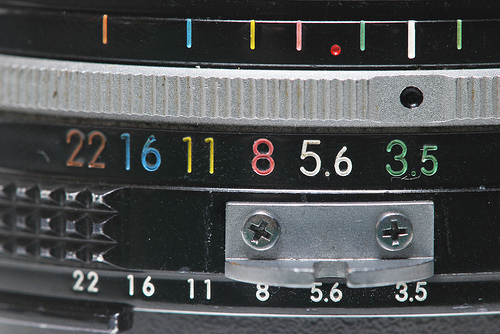Aperture and/or other technological photography fundamentals can cause yawns in most of the keen growing shutterbugs, however, once if these essentials or the basics are understood by them, the remaining photography can be easily focused on. All the terms, Aperture, ISO and shutter speed can be followed, if you have cameras of point and shoot or a professional one. This article will be a great help and will explain aperture and will definitely provide tips for using this type of camera for a better photography creation.
For a better understanding of aperture, you should fist think about the bigger and smaller growth of the irises of eyes when more/less light enters the pupil. Likewise, the lens of the camera diaphragm narrows and broadens for letting in light more or less. Therefore, it is aperture that determines the picture exposure and that results in clear or dark photographs. Apart from this aperture also has other vital function which will be explained further in the article.
“Aperture” means the size of opening and is usually F stops measured. If the F stop is smaller, the aperture will be wider. This may be quite confusing. Therefore, ratios are regarded as F stop numbers and that is why if the F stop number is big, the aperture size will be small.

Coloured aperture values. Photo by Steven Wong
Depth of the field is also controlled by the aperture along with the light control. This theory can be better understood by holding a fist in front of the eye and when u open your hand slowly, you can see the changing focus. And if the fist is opened larger, more you can see. Thus, you can notice that initially when the fist was small, things which you could see were equally focused. If you try again, you can notice that when the fist is opened, the closest object is focused sharply whereas, the far away objects are out of focus. Same thing is explained in the field depth of aperture and it determines the focused photographs.
Pictures taken in Auto Focus (AF), the camera attempts to focus the main subject, but actual it may not when you really want it. For this main reason, most of the cameras are set with Aperture Priority setting to eradicate this difficulty. By doing this setting, the speed of shutter gets adjusted to balance aperture that is larger/smaller aperture. For instance, if a landscape aperture is set, the shutter narrows and less brightness gets in. Therefore, the camera lengthens automatically and the shutter continues to be open so that the photo does not get underexposed. Though the priority of aperture is not perfect, normally it do work.
If you own a SLR and pictures are taken while in manual mode, shutter speed and the aperture can be adjusted separately. Many people have cameras which are in the present modes, like, sports, landscape, portrait etc. And if the mode is set in the landscape mode, automatically aperture narrows so that everything is focused. Simultaneously, the speed of shutter is automatically adjusted or slows down and leaves the shutter open for a longer time and is offset for small amount of light that is coming all through the diaphragm of lens.
And if you go in portrait mode and try to focus on a person or thing that is in your front with landscape background, the camera brings the subject in focus and makes the standing person come out more clearly against landscape. Therefore, shutter speeds up so as that the picture is not overexposed by more light that is allowed in the aperture that is large.

Ricoh 55 mm prime lens. Nice pentagonal aperture and colored reflections from the glass.
You should always remember that if the aperture is small, the F stop number is great (as a single ratio is represented and not the number in whole) and the field dept is also great. Usually photo shooting modes are supported by digital cameras that are automatic and you have manually just point and shoot where the cameras do not do anything. Aperture Priority is one of those modes. It is useful in various situations and is worthy of an explanation of its use and type.
When you set the camera in an Aperture priority mode by using the menus that are on the camera LCD, you have to look through and choose from the menus which Aperture priority you want by just rotating dial modes and choose the aperture priority according to its symbol, which in most of the cases are “A” (capital A).
In this mode you have set the aperture value manually and for the rest of the thing, camera takes care. For instance, the optimal speed of the shutter is set according to your choice of aperture. Though certain physical limitations are there and all the chosen aperture value cannot be matched with other settings that can result in a better photo. The camera itself will tell you by flashing a LED that is green in color or in other cases; you can just check them manually.




[…] Guide to Aperture Priority Mode […]
tire repair portales
The Full Photographer’s Guide to Aperture Priority Mode | Lorelei Web Design
Flowers Delivered
The Full Photographer’s Guide to Aperture Priority Mode | Lorelei Web Design